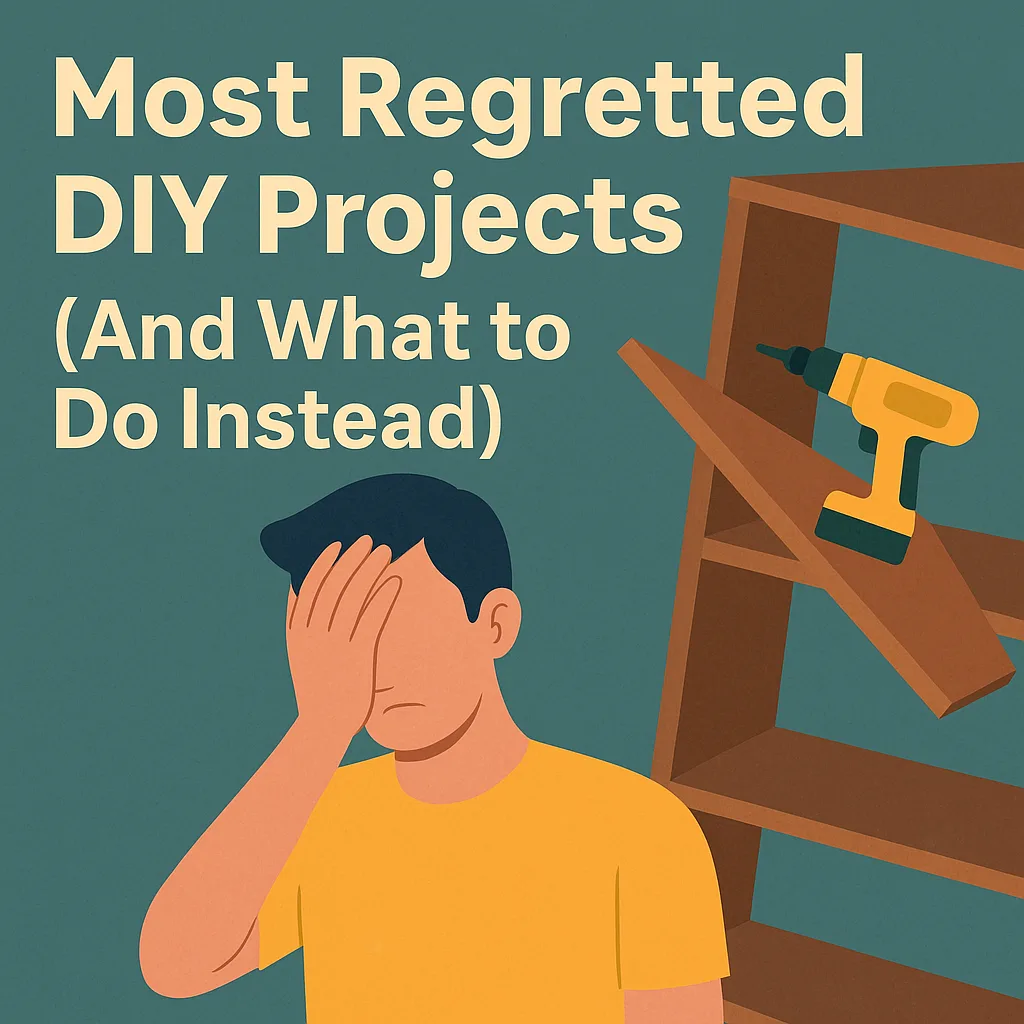New! DIY Project Planner. Plan smarter, skip the spreadsheets. Start Your Free Trial Today →

Not every project is worth the sweat equity. Some DIYs seem like a great idea—until you’re knee-deep in regret, surrounded by half-done cabinets or crumbling tile. If you’ve ever thought “this will be easy” and ended up three weekends deep with nothing to show for it, you’re not alone.
In this post, we’re covering the most common DIY projects that homeowners regret tackling themselves—and what smarter alternatives you can choose to get the result you actually want. Whether it’s a bad paint job or a structural mistake, we’ve got the fixes.
Painting cabinets sounds simple, but it’s one of the most regretted projects by first-time DIYers. Without the right surface prep—like degreasing, sanding, priming, and proper curing between coats—you’ll end up with peeling paint, streaks, and a sticky finish that never fully hardens.
What to Do Instead:
That beautiful subway tile? It won’t stay pretty if you skipped the backer. Sticking tile directly to drywall is a common mistake that leads to cracked grout, water damage, and eventually mold or tile failure—especially in kitchens or bathrooms.
What to Do Instead:
Patching a hole in drywall can be tricky. Many DIYers underestimate the time it takes to apply thin coats, let them dry, sand, and repeat until the wall is flat and invisible under paint. Rushing leads to lumpy, visible patches that stand out in the worst way.
What to Do Instead:
Removing a wall or altering framing without permits or plans is a huge mistake. It might look simple, but unless you know what’s load-bearing and how to support it, you could compromise the entire house structure.
What to Do Instead:
Laminate is often marketed as DIY-friendly, but it only turns out well if you take the time to prep your subfloor, lay moisture barriers, and leave expansion gaps. Otherwise, expect buckling, uneven boards, or creaky floors.
What to Do Instead:
If you’ve ever seen a shelf pull out of drywall or a TV fall off the wall, you’ve likely seen a project that skipped anchors. Many first-timers don’t realize that drywall alone won’t hold much weight.
What to Do Instead:
Painted arches, geometric trim, and shiplap walls can look amazing—or totally off. Trendy accent walls often age quickly or just clash with the rest of the room. Worse, they take hours to install and rarely add home value.
What to Do Instead:
Cleaning stained patios and driveways the wrong way—like blasting them with a pressure washer or using harsh cleaners—can etch the surface, cause pitting, or damage sealant.
What to Do Instead:
Low-cost tools can be tempting, but they often fail mid-project, underperform, or cause frustration. Regret sets in when your drill won’t charge or your jigsaw can’t make a clean cut.
What to Do Instead:
The most regretted DIY projects usually have one thing in common—missing knowledge. It’s not about skill level; it’s about starting with the right prep, using the right tools, and choosing the right projects for your time and experience.
Want to avoid making the same mistakes? Download our free Builder Playbook Checklist, which covers every step from planning to punch walk. It’s the same framework pros use to manage successful home upgrades.
Also worth reading: Zillow’s study on DIY projects that hurt resale value to know what to avoid long-term.